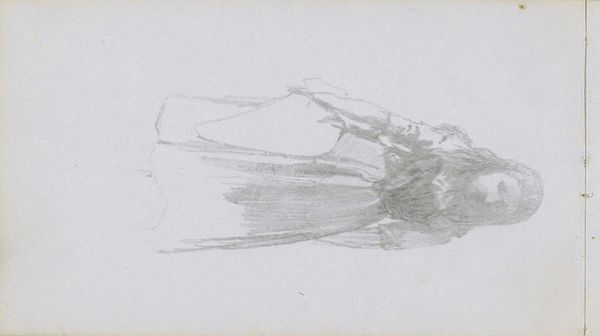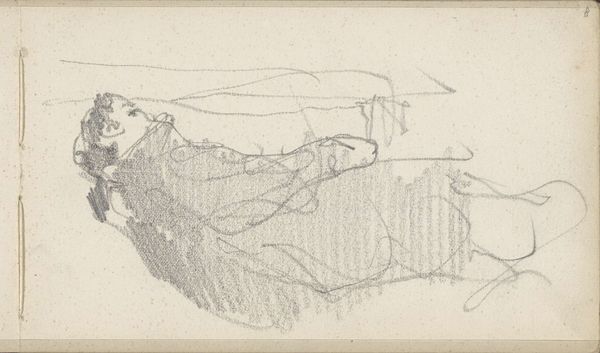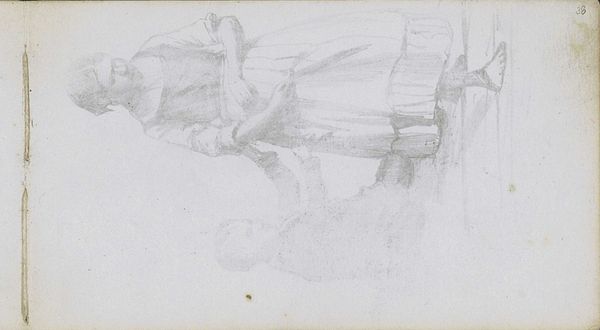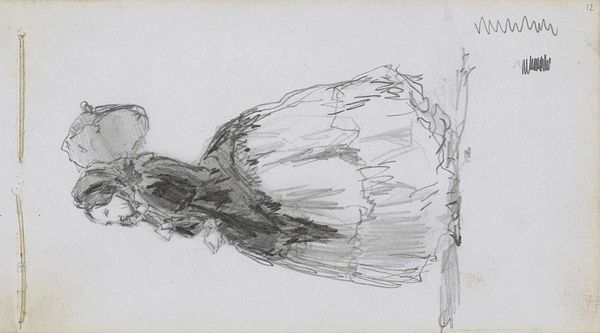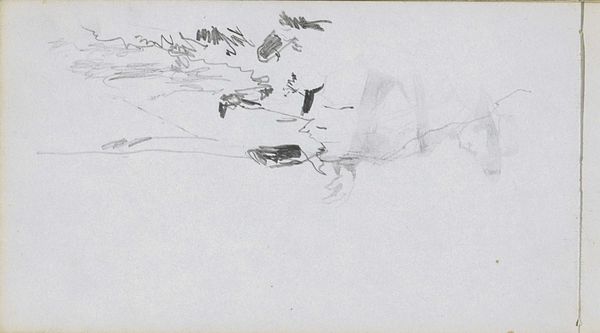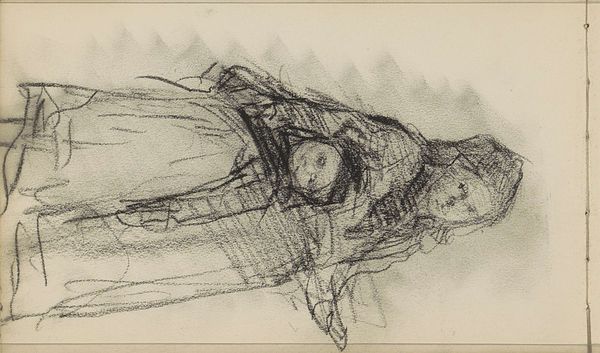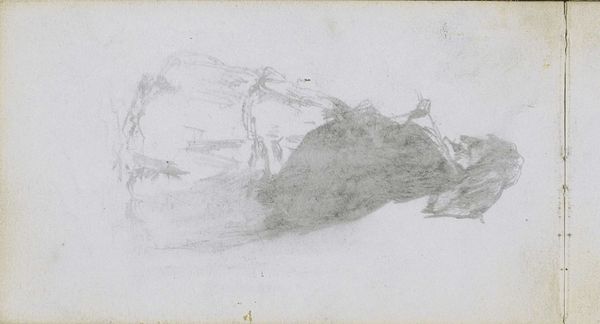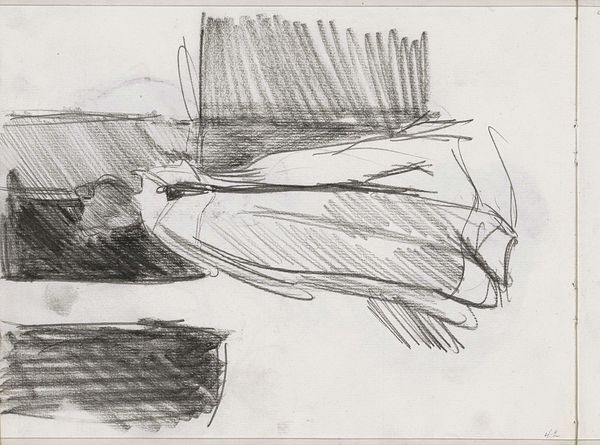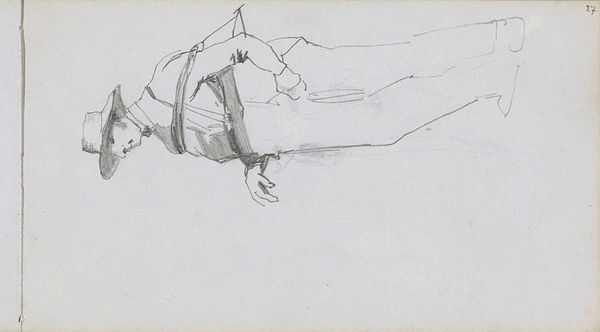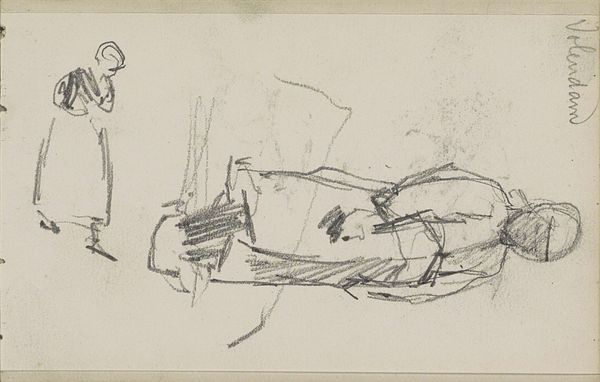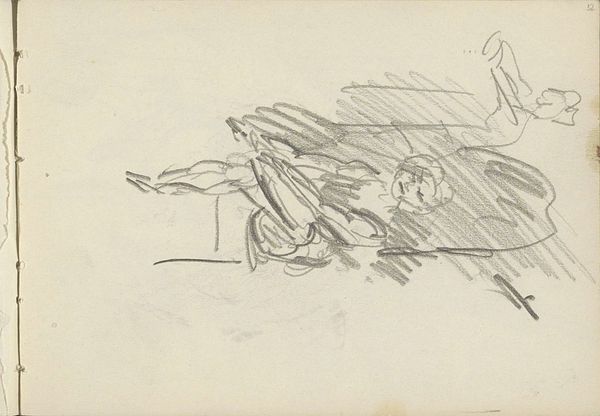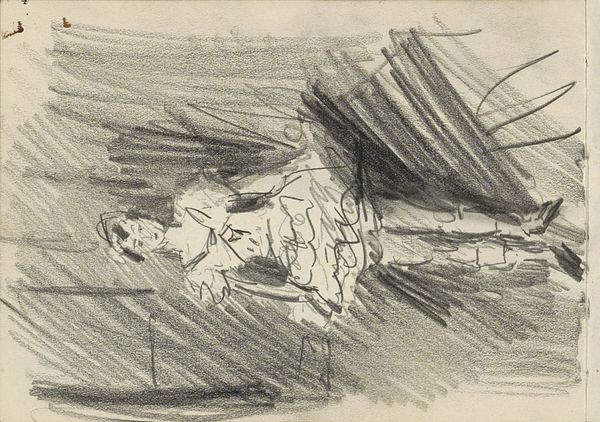
drawing, paper, pencil
#
portrait
#
drawing
#
pencil sketch
#
figuration
#
paper
#
pencil
#
sketchbook drawing
#
pencil work
#
realism
Copyright: Rijks Museum: Open Domain
Editor: Here we have "Standing Girl" by Johan Hendrik Weissenbruch, made sometime between 1834 and 1903. It’s a pencil drawing on paper, housed here at the Rijksmuseum. I’m immediately drawn to the simplicity of the sketch; it feels very raw and immediate. What do you see in this piece from a formalist perspective? Curator: Initially, one is compelled to analyze the application of line. Notice how Weissenbruch utilizes varying densities of pencil strokes, seemingly concerned with differentiating planes within the figure. Observe the contrast created, for example, in the skirt. How would you say the light interacts with this area? Editor: I see the darker strokes suggest shadows and volume, while the lighter areas seem to catch the light. The dress has much stronger hatching, making it stand out. Curator: Precisely. It's important to observe the rhythmic application of these lines, contributing to a textural interplay between light and shadow, mass and void. We can also read his marks like semiotic gestures of art-making – this seems not only a study of a young woman, but an expression of a method, or an ethos of Realism. Editor: That's interesting. I hadn't considered the lines themselves as part of the subject. It seems almost like a self-aware drawing, commenting on its own creation. Curator: Yes, in its very incomplete presentation, Weissenbruch also shows what parts of the image need most description, versus what is vestigial or merely contextual. Consider the nature of a sketch, with only specific areas having such density. What does that accomplish here? Editor: It really directs the eye. I guess it also makes her the most "complete" part of the composition. I never thought of it like that! Thanks! Curator: It illustrates that even seemingly simple works, like this quick drawing, provide opportunities for deep consideration of form, line, and the artist’s own visual language.
Comments
No comments
Be the first to comment and join the conversation on the ultimate creative platform.
